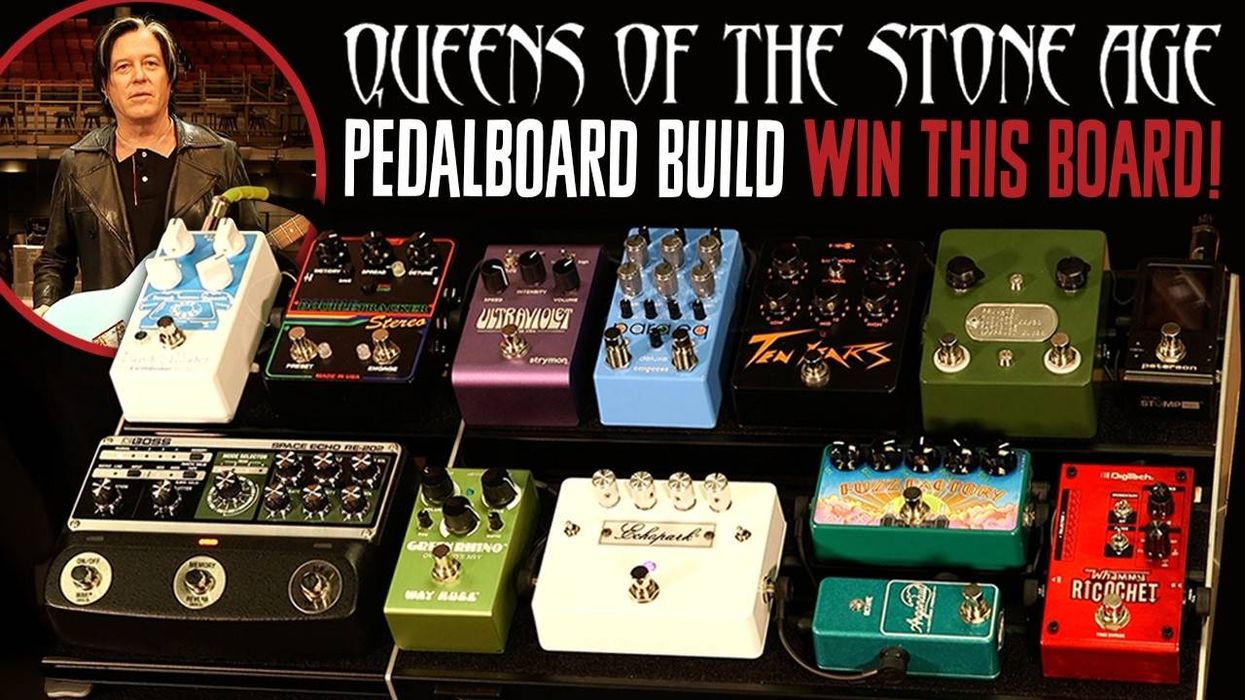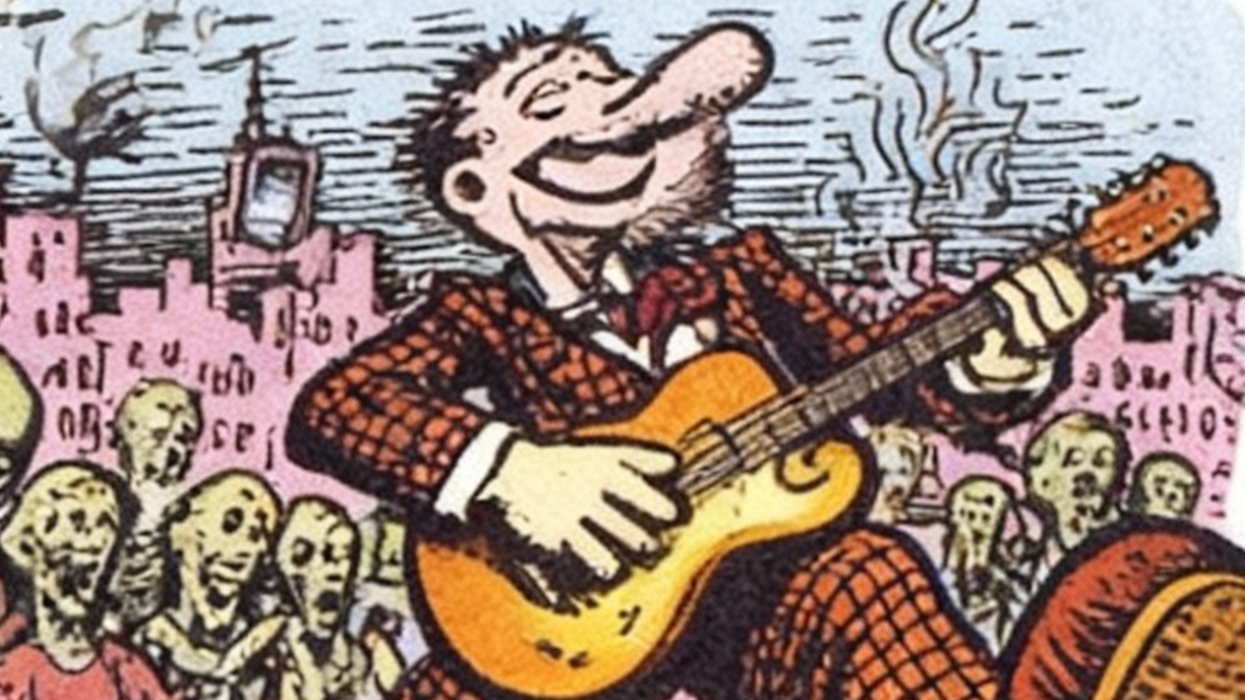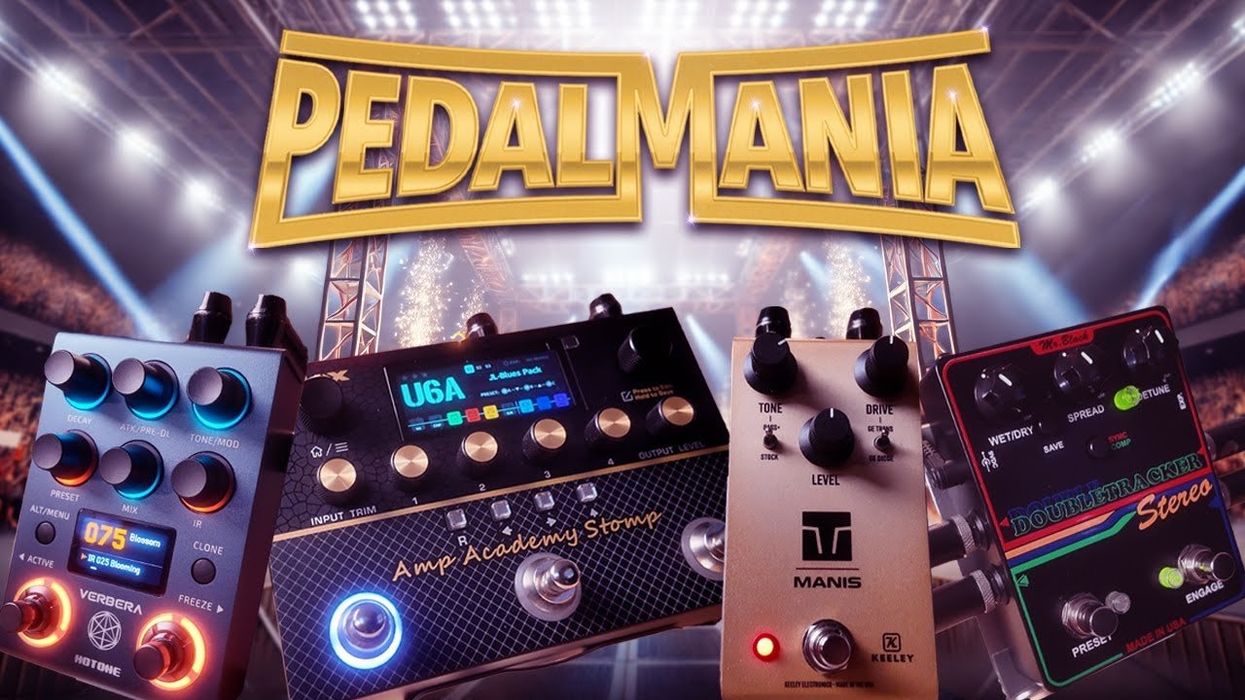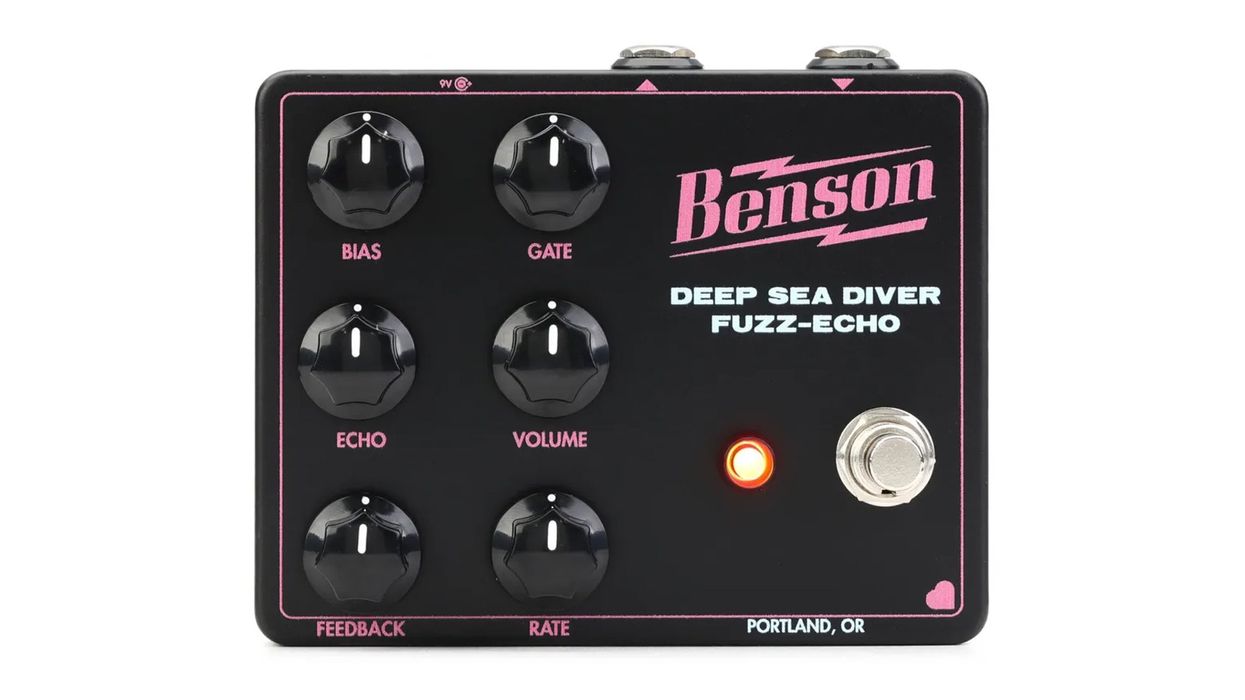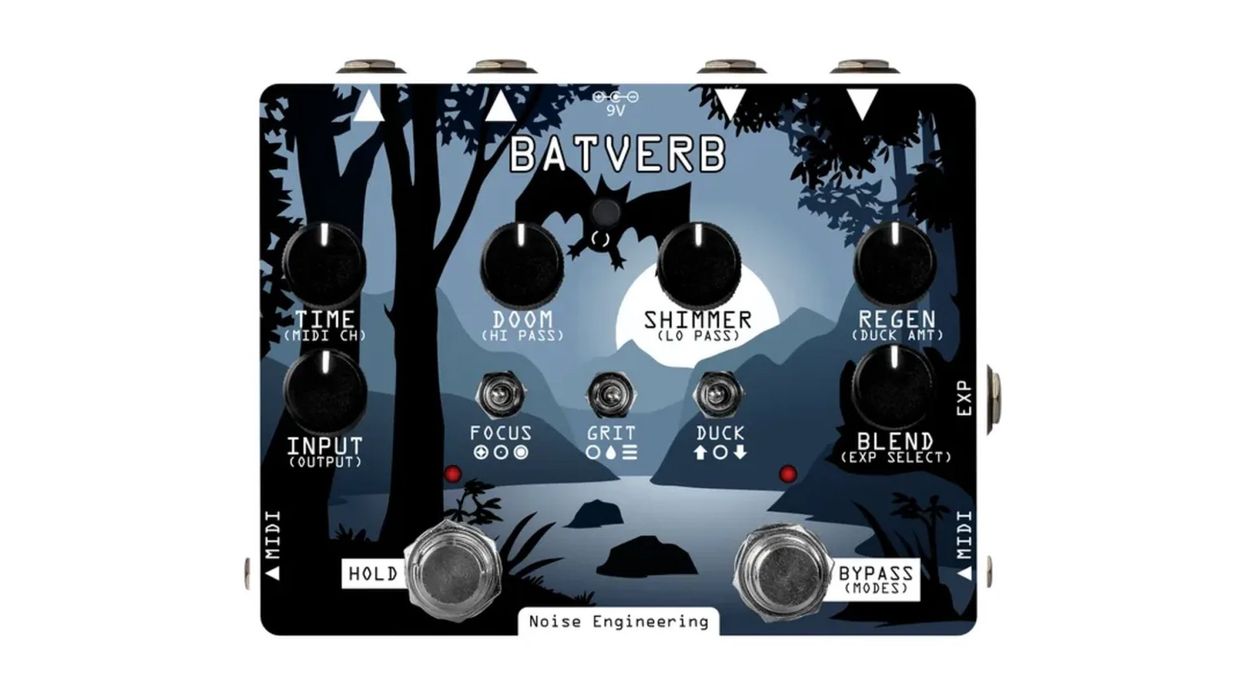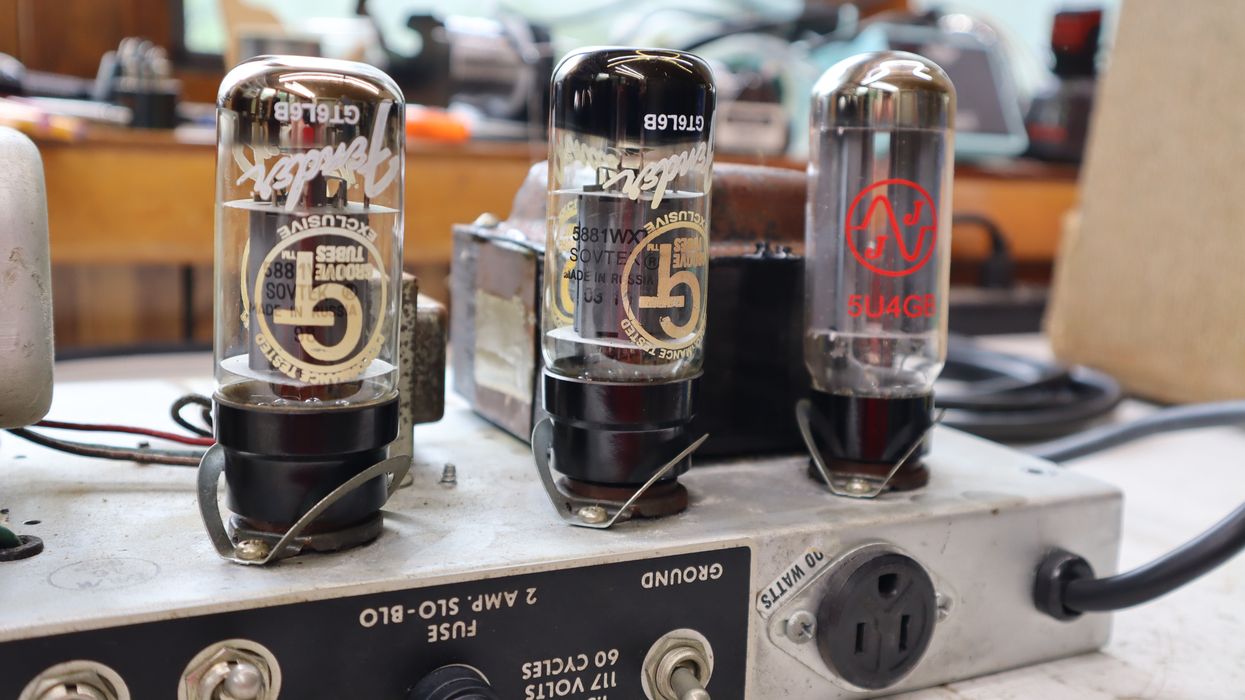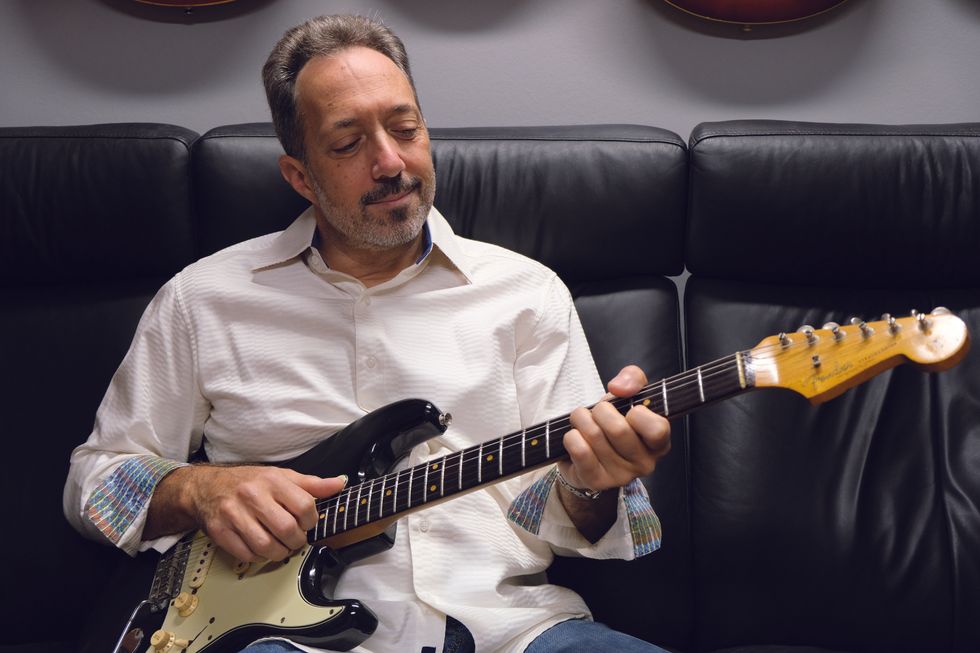Ask adventurous pedal builders to name the coolest weird pedal ever, and there's a good chance you'll hear something about the Schumann Electronics PLL. RPS Effects' aptly named new Arcade Machine is the latest of many available PLL homages. While others have shrunken and simplified the approach (EarthQuaker Devices' Data Corrupter and Mantic's Flex being perhaps the best known), the Arcade Machine remains on the large side, though it does manage to cut the number of controls from Schumann's 15 to 11—and to label their functions much more self-evidently.
Recorded with a Squier Classic Vibe '70s Jaguar with Curtis Novak Jag-V pickups feeding the Arcade Machine, then the boost side of a SoundBrut DrVa MkII, a Ground Control Tsukuyomi mid boost, a SolidGoldFx Electroman MkII delay, an Anasounds Element reverb, and then a 1976 Fender Vibrolux Reverb miked with a Royer R-121 and a Shure SM57 going into an Audient iD44 then into GarageBand with no EQ-ing, compression, or effects.
Clip 1: Bridge pickup with high-pass filter engaged. Arcade Machine with -2 oct knob at minimum, -1 oct, 0 oct, and int-level knobs at noon, +1 and +2 oct controls at 9 o'clock, gate at max, level at 7:30, vibrato off, and an expression pedal changing pitch intervals.
Clip 2: Bridge and neck pickups with high-pass filter engaged. Arcade Machine with -2 and +2 oct knobs at minimum, -1 oct at 3 o'clock, 0 oct at 9 o'clock, int-level and +1 oct at noon, gate at 4 o'clock, level at 7:30, vibrato off, and a minor-third interval selected.
Clip 3: Neck pickup. Arcade Machine with -2 oct at minimum, -1 oct at 11 o'clock, 0 oct at max, int-level and +2 oct at 10 o'clock, +1 oct at 2 o'clock, gate at 2 o'clock, level at 7:30, vibrato depth at 9 o'clock and rate at noon, and a perfect-fourth interval selected.
What unites all the aforementioned eff-things-up boxes is their use of "phase-locked loop" circuitry—which sounds nothing like what those individual terms might mean to most guitarists. Arcade Machine is an analog monophonic harmonizer that converts your signal to a square wave and lets you add up to five other pitches—up to two octaves above and/or below the source, plus one of 11 intervals. Sonically speaking, "square wave" should be the operative term rather than "harmonizer," as it all adds up to sounds reminiscent of vintage video games and/or old-school synths gone haywire. There are independent volume controls for all six pitches, while a gate knob instills a modicum of predictability vis-à-vis attack control, a vibrato circuit's depth and rate knobs govern agitative throbbing, and an expression/CV input vastly expands your ability to bleep-bloop-bloop and digitally mangle the $#!% outta your sound in ways sonic anarchists will deem patently glorious.
Test Gear: Squier Classic Vibe '70s Jaguar with Curtis Novak pickups, '76 Fender Vibrolux Reverb









